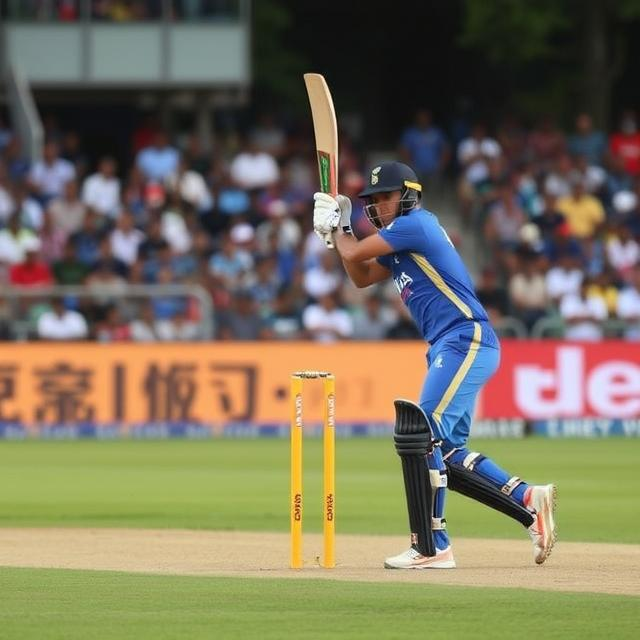Pakistan’s 2003 Cricket World Cup Squad: A Look Back at the Men in Green
Pakistan’s 2003 Cricket World Cup Squad: A Look Back at the Men in Green
The 2003 Cricket World Cup, held in South Africa, was a tournament filled with drama, upsets, and memorable moments. For Pakistan, the journey was a fascinating mix of brilliance and heartbreak. This article delves into the squad, analyzing the players, their roles, and the overall performance of the team.

A Team of Titans and Emerging Stars
Pakistan’s 2003 World Cup squad was a blend of seasoned campaigners and exciting new talent. Experienced players like Inzamam-ul-Haq, the captain, and Shoaib Akhtar, the fiery paceman, were expected to carry the team’s hopes, while younger players like Younis Khan and Mohammad Yousuf were showing glimpses of their future brilliance. The team’s composition reflected a mix of styles and strengths, a blend that looked promising but also presented challenges in different situations.
Key Players:
Inzamam-ul-Haq: The captain of the side, Inzamam-ul-Haq was known for his solid batting and strategic acumen. He’d been a mainstay of Pakistani cricket for years. His leadership was crucial, though he faced pressure to deliver consistently in a tournament environment.
Shoaib Akhtar: The ‘Rawalpindi Express’ was Pakistan’s premier fast bowler. His blazing pace and ability to swing the ball posed a significant threat to the opposing batting lineups. His performances, however, were sometimes unpredictable.
Saeed Anwar: A highly accomplished batsman, Saeed Anwar offered crucial batting depth and expertise.
Younis Khan: He was rising through the ranks, and his potential was already evident. A solid middle-order batsman, he played a crucial role in Pakistan’s matches.
Mohammad Yousuf: His powerful batting style promised explosive innings in the tournament. His presence in the middle order and his ability to contribute substantially boosted their batting batting power.
Other Notable Players: The squad also included several other significant players. Their individual strengths, combined, should have contributed to a strong overall performance.
Challenges and Opportunities
Although the squad boasted some of the best talent in Pakistan’s cricket history, there were challenges. The 2003 World Cup was in a very crucial time of transition for the team. There were concerns regarding team cohesion, especially in the face of high expectations. The pressure to perform was immense, and some players struggled to manage this psychological weight. The squad needed to adapt to different conditions and bowling styles of their opposition. This required a team that could be flexible and adaptive.
However, this same potential highlighted a key opportunity: a chance for the team to showcase their talent on a global stage. The World Cup presented a chance for young players to prove themselves. Pakistan could also capitalize on the experience of their veterans. By achieving consistency, they could create an exciting team to be reckoned with on a larger stage.
Detailed Squad Analysis:
To truly understand the squad, a look at each position and player’s contributions would be invaluable. Inzamam-ul-Haq’s leadership and batting were key. Shoaib Akhtar’s performances were sometimes inconsistent, creating an element of unpredictability. A detailed look at their performance in each match would provide a complete view.
Comparison to Other Teams:
Analyzing Pakistan’s performance against other prominent teams, like Australia, India, and Sri Lanka, could reveal patterns and highlight the strengths and weaknesses in their strategies. Looking closely at the key clashes in the group stages would be crucial in assessing Pakistan’s position in comparison.
The Outcomes:
Pakistan’s journey in the 2003 World Cup, ultimately, was one of both moments of glory and disappointment. The team’s performance fluctuated. Analysis of the matches and each player’s individual contributions would provide valuable insights into Pakistan’s performance. Understanding Pakistan’s triumphs and losses in their matches would provide a clear picture of what could be expected from the team and from future players in similar scenarios.
The Legacy of the 2003 Squad:
The 2003 World Cup squad, regardless of its outcome, was a significant part of Pakistani cricket history. The team provided a foundation, both for the players and the game itself. The experiences and performances of these players shaped the development of Pakistani cricket. Studying this squad provides valuable lessons in team dynamics, player psychology, and the evolution of the game.
The players on this squad were a mix of veterans and rising stars. They embodied the spirit of Pakistan cricket, a spirit that has evolved over the years.
Further Research:
Detailed match-by-match analysis of Pakistan’s matches in the 2003 World Cup, including statistics and player performances, can paint a more vivid picture. Studying player interviews from that period would offer crucial insights. A similar look at other teams would allow a comparative analysis.
The 2003 World Cup squad’s journey remains a crucial part of Pakistan’s cricket history, a reminder of the highs and lows, the potential, and the lessons learned in the pursuit of excellence. Understanding the challenges and opportunities this squad faced provides invaluable perspective for future players and coaches.